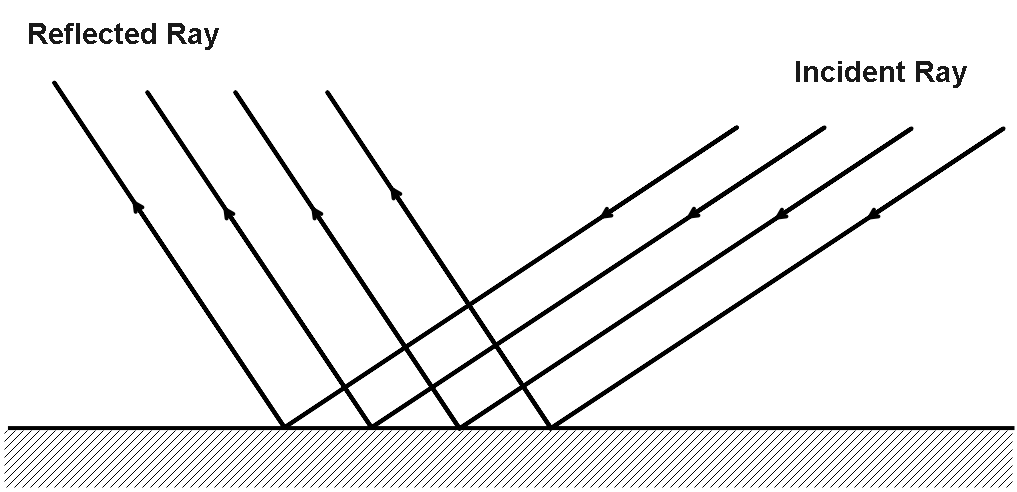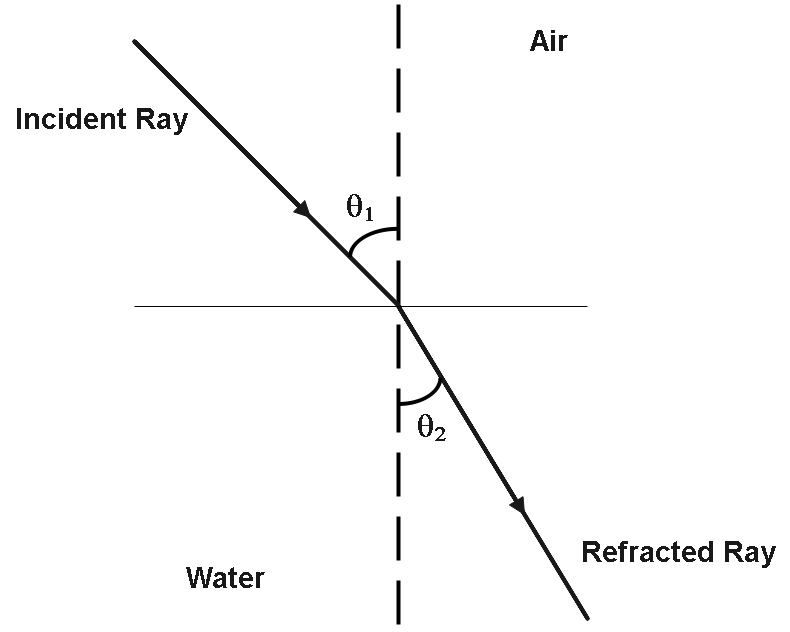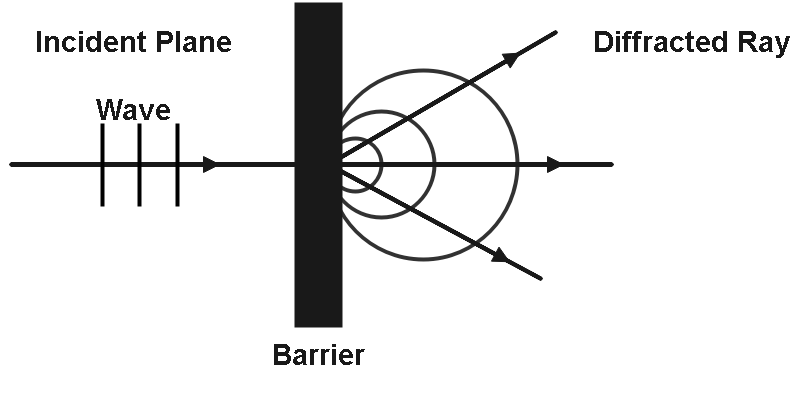
What is the difference between reflection, refraction, and diffraction?
Answer
411.3k+ views
Hint: In this question we will know what are the differences between reflection, refraction, and diffraction. Reflection of light occurs when light rays strike a surface and bounce back or reflect off it, refraction is when light rays enter a different medium of different optical density and change direction, or bend and diffraction is a little bit different phenomenon, in this light wave get spread in different directions because of some obstacle in the path.
Complete step by step solution:
Reflection:
Definition:
In reflection, Incident or Incoming ray/wave gets reflected back without passing through the Object/medium.
Properties:
The law of reflection states that the angle of incidence is equal to the angle of reflection. i.e.,
The law of reflection states that the incident ray, the reflected ray, and the normal to the surface of the mirror all lie in the same plane.
Example:
Mirrors
E.g., Mirror sign in an ambulance

Refraction:
Definition:
In physics, refraction is the change in direction of a wave passing from one medium to another or from a gradual change in the medium. Refraction of light is the most observed phenomenon, but other waves such as sound waves and water waves also experience refraction.
Properties:
The law of reflection states that the incident ray, the reflected ray, and the normal to the surface of the mirror all lie in the same plane.
The ratio of the sine of the angle of incidence to the sine of the angle of refraction is a constant. This is also known as Snell's law of refraction.
i.e.,
Example:
Swimming pool appears shallower than it is.
Water waves
White light

Diffraction:
Definition:
Diffraction refers to various phenomena that occur when a wave encounters an obstacle or opening. It is defined as the bending of waves around the corners of an obstacle or through an aperture into the region of geometrical shadow of the obstacle/aperture.
Properties:
The narrower a gap is, the greater the diffraction.
The wider a gap is, the greater the diffraction.
Examples:
Diffraction of light (e.g., telescope,)
Diffraction of ultrasonic waves (ultrasound)
TV/radio reception

Note:
There is no ideally Reflecting or Refracting surface/medium, so we can say that whenever there is a Refraction, there must be a reflection and vice versa. When a light way gets Reflected some amount of it may get absorbed or refracted and hence there is no Perfect reflection and same applies for refraction, Whenever There is a Refraction, some amount of Light get Reflected back and hence we can say there is no perfect or ideal refraction exists in this World.
Complete step by step solution:
Reflection:
Definition:
In reflection, Incident or Incoming ray/wave gets reflected back without passing through the Object/medium.
Properties:
The law of reflection states that the angle of incidence is equal to the angle of reflection. i.e.,
The law of reflection states that the incident ray, the reflected ray, and the normal to the surface of the mirror all lie in the same plane.
Example:
Mirrors
E.g., Mirror sign in an ambulance

Refraction:
Definition:
In physics, refraction is the change in direction of a wave passing from one medium to another or from a gradual change in the medium. Refraction of light is the most observed phenomenon, but other waves such as sound waves and water waves also experience refraction.
Properties:
The law of reflection states that the incident ray, the reflected ray, and the normal to the surface of the mirror all lie in the same plane.
The ratio of the sine of the angle of incidence to the sine of the angle of refraction is a constant. This is also known as Snell's law of refraction.
i.e.,
Example:
Swimming pool appears shallower than it is.
Water waves
White light

Diffraction:
Definition:
Diffraction refers to various phenomena that occur when a wave encounters an obstacle or opening. It is defined as the bending of waves around the corners of an obstacle or through an aperture into the region of geometrical shadow of the obstacle/aperture.
Properties:
The narrower a gap is, the greater the diffraction.
The wider a gap is, the greater the diffraction.
Examples:
Diffraction of light (e.g., telescope,)
Diffraction of ultrasonic waves (ultrasound)
TV/radio reception

Note:
There is no ideally Reflecting or Refracting surface/medium, so we can say that whenever there is a Refraction, there must be a reflection and vice versa. When a light way gets Reflected some amount of it may get absorbed or refracted and hence there is no Perfect reflection and same applies for refraction, Whenever There is a Refraction, some amount of Light get Reflected back and hence we can say there is no perfect or ideal refraction exists in this World.
Recently Updated Pages
Master Class 12 Business Studies: Engaging Questions & Answers for Success

Master Class 12 English: Engaging Questions & Answers for Success

Master Class 12 Social Science: Engaging Questions & Answers for Success

Master Class 12 Chemistry: Engaging Questions & Answers for Success

Class 12 Question and Answer - Your Ultimate Solutions Guide

Master Class 11 Economics: Engaging Questions & Answers for Success

Trending doubts
Draw a labelled sketch of the human eye class 12 physics CBSE

a Tabulate the differences in the characteristics of class 12 chemistry CBSE

Which one of the following is a true fish A Jellyfish class 12 biology CBSE

Why is the cell called the structural and functional class 12 biology CBSE

Differentiate between homogeneous and heterogeneous class 12 chemistry CBSE

Write the difference between solid liquid and gas class 12 chemistry CBSE




